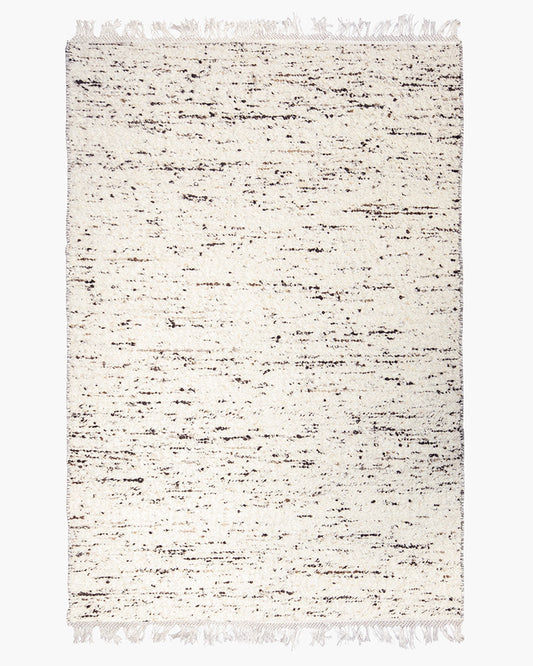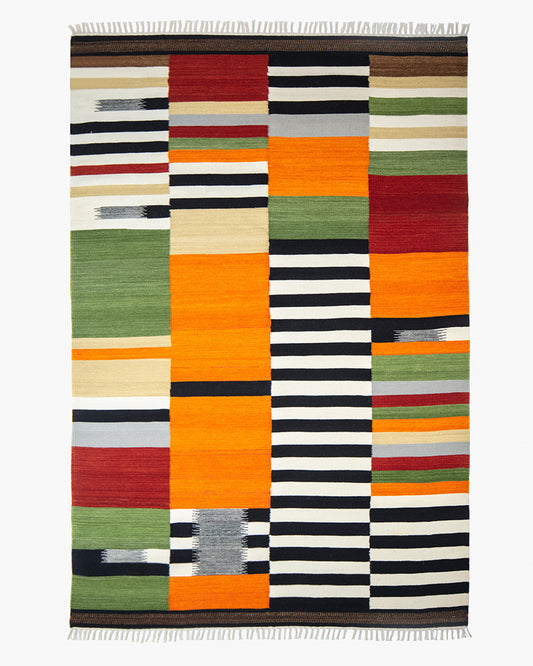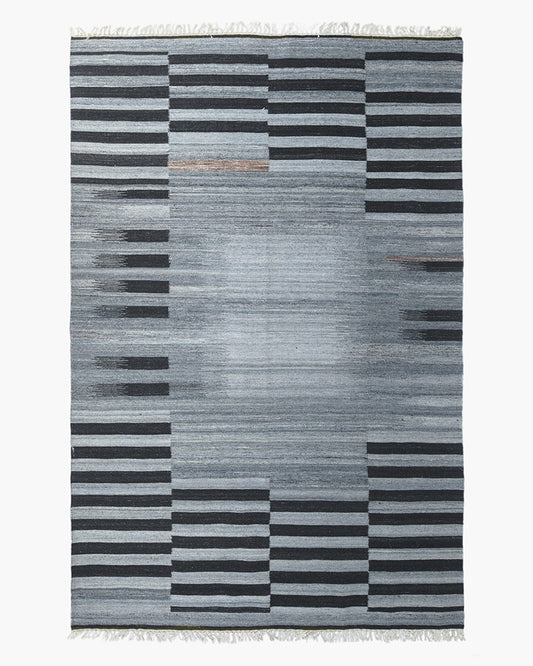Edward Burtynsky, Container Ports 8, Racine Port Montreal, 2001
My first rug collection started with a trip to visit rug producers in January 2020. Halfway through developing the collection, COVID-19 hit.
It quickly became clear that for many in India the cure was worse than the disease.With a lack of government support during lockdowns and high levels of unemployment, Spring of 2020 was tough for many. People needed to get back to work, and so they did. To my surprise, final samples were finished, and my first rug order was completed by August 2020.
Choppy Seas
Getting the rugs to Canada was a whole other kettle of fish. Like most offshore products, my rugs are transported in shipping containers. Government lockdowns in early COVID would close shipping ports at different times around the world. In certain ports, boats were waiting in droves to unload while in other ports product was piling up to be loaded but with no boats in sight.
In a response to the pandemic many companies canceled orders. This exacerbated the problem. Demand for these vessels completely dropped off; making these idling behemoths extremely costly, and in some cases even causing shipping companies to sell some of their fleets for scrap metal.
Edward Burtynsky, Shipbreaking #9, Chittagong, Bangladesh 2000
Tickets Please
This is the backdrop for my rugs to start their journey from halfway around the world. Their itinerary was as follows:
- Depart from Mumbai and head west over the Arabian Sea, up the Red Sea and through the Suez Canal.
- Pop out in the Mediterranean and have a pit stop in Greece to be transferred onto a new ship.
- Zigzag through the Mediterranean and over the Atlantic.
- Propel up the Saint Lawrence and unload in Montreal.
- Take a quick ride on the Canadian Railroad to Toronto.
However, when it was go time, there was no container or boat to transport the rugs. Everything was booked up and backed up. My rugs sat in a warehouse outside of Mumbai for a month waiting to get a spot in a container and ship. When they finally got to Greece they had to stay there for an extended layover, waiting on the backed-up Montreal port. The trip was three times longer than originally quoted. My following order over the summer saw similar wait times, and dealt with additional backups caused by the infamous Evergreen Suez Canal blockage.
My new shipments will be faced with a slightly different problem. In countries where government spending helped citizens stay afloat combined with the middle and upper class’s saving instead of spending during lockdowns, many people find themselves with a little extra cash. This has created a massive spending spree, supercharging the demand for imports. Unfortunately, many ports are still backed up and containers are still in the wrong places. This means that shipping costs are at an all time high.
Shipping containers waiting to unload off the coast of Los Angeles
More of Everything
So what’s next? We could be looking at further shipping delays and high prices until mid 2022. We will likely see more products in shops out of stock for months to come. It will take time, but these issues will slowly get sorted out. However, it is undeniable that the pandemic has altered international trade. Don’t worry, nobody needs to start stocking their bomb shelters to live through the impending toilet paper shortage. What this means is that companies are starting to rethink their supply chains, and many of them will make changes for the better.
Some companies will start bringing certain parts of production back closer to home, investing in local factories and automating processes once completed by cheap labor in other countries. But many companies will continue to make products all around the world for a long list of legitimate reasons. World trade will continue to rely on the efficient and cost-effective container ship industry. The future holds more production everywhere.
I believe the real shake up is for time sensitive products like seasonal or consumable goods as well as critical products like computer chips and batteries. This is where innovation and rejigging will be most needed.
Chris Jordan, Container Yard No. 1, Seattle 2003,.
Slow is Working
As for me, I am one of the lucky ones. The rug industry is not known for its innovation. I am working within a tradition that predates much of written history. My business is based on partnering with crafts people whose skills and output are not matched anywhere within Canada. India continues to be one of the best places in the world for rug weaving.
I also have time on my side. The intention of this company is to make products that last for generations, not seasons. So, if I need to wait a few more weeks for rugs to arrive then so be it! I’ll plan accordingly. I’m happy to say I'm fully stocked in all rugs, and I’ll keep working to stay that way.




